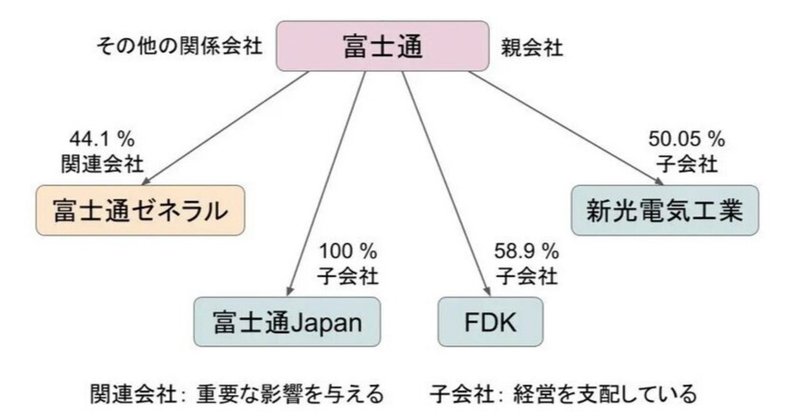
処理件数の増大に耐えられなかった富士通Japan製コンビニ交付システム
この記事を書いた後、日経コンピュータの関連記事を読むことができたので、補足しておきたい。
トラブルを起こした富士通Japan製コンビニ交付システム(Fujitsu MICJET コンビニ交付)は、富士通のサイトによると、元々は住民基本台帳カードを使って、コンビニエンスストアで証明書を印刷するための仕組みだった。
マイナンバーカードに変わっても、このシステムの基本設計はそのまま引き継がれたのではないかと思う。
全国989団体(2022年12月現在)の自治体で導入しております。2016年1月からは個人番号カードを利用することも可能となり、今後も団体数は増加すると予想されます。
富士通は多くの自治体様へのコンビニ交付導入実績をもとに、安全確実なシステム導入と住民サービス向上を支援いたします。
また、従来からの「コンビニ交付ソリューション」に加え高い信頼性・運用性を備えたSaaS型サービス「コンビニ交付クラウドサービス」も提供いたします。
ウィキペディアによると、住民基本台帳カードの2014年3月31日現在の累計交付枚数は、8,335,115枚だったそうだ。
一方、総務省によると、マイナンバーカードの発行数は、4月30日現在で、87,865,814枚である。
マイナンバーカードの発行枚数は、住民基本台帳カードの枚数の約10倍である。
規模がこれだけ違うと、システムも、それに備えた対応が必要だろう。富士通Japan製コンビニ交付システムの場合、住民基本台帳カードの時には処理件数が少なくて、トラブルは起きなかったのかもしれない。しかし、マイナンバーカードになって処理件数が増えたことで、バグが発覚した。
⾃治体システムに詳しい⽴命館⼤学情報理⼯学部の上原哲太郎教授は今回のトラブルについて、「驚いた。技術としてやや稚拙な設計だったのではないか」と話す。上原教授は「このような設計になった背景・事情は分からない」と前置きしつつ、「これだけWebのような並列処理が⼀般化した中で、逐次処理にこだわった点はやや疑問だ」と指摘する。
逐次処理は設計がシンプルになるメリットはあるものの、処理は並列処理のほうが速い。
加えて「1件終わったら1件処理をするという『タイミング』で処理をつないでいるのはそもそも危ない。システムは異常があった際も、安全に処理を続けたり、終了したりできるようにする設計が求められる」(同)。
本来はファイル名と送信処理をIDでひも付けるなどして申請者に正確にファイルを送信するのが⼀般的という。実際、今回のトラブルはファイル名を同⼀にして運⽤していたため、上書きされた。
逐次処理で設計した経緯について富⼠通Japanは回答を控えた。
そのうえで「逐次処理を⾏っている点やファイル名が同⼀だった点は特段問題があったとは考えていない。今回はバグが内在していた点が問題だ」(國分⽒)との⾒解を⽰した。
ただ、「コンビニ交付の今後の利⽤者数の推移などを⾒ながら、設計の⾒直しや運⽤監視体制の強化など、必要な対策を講じていきたい」(中村⽒)とした。
「やや稚拙」程度では、驚くはずがなく、多分かなり稚拙だと思ったのだろう。
この記事によると、富士通Japan製コンビニ交付システムを使っている自治体は、123カ所だという。それ以外の自治体が利用しているシステムは、どのようなデザインになっているのだろうか?
日経BPの記者に、他社のシステムも取材してほしい。
ところで、富士通Japanの謝罪では納得されないと思ったのか、親会社の富士通の社長がこれまでに2回謝罪している。さらに6月末に、このシステムは宗像市でトラブルを起こしているが、富士通はどう対応するのだろうか(このトラブルについては改めて書こうと思う)。
タイトル図は、かいとビジネス「富士通と富士通ゼネラル、富士通Japanの関係と違い」の記事から引用。
Fujitsu Japan's Certificate Issuance System for Convenience Stores Couldn't Stand the Increase in Number of Transactions
After writing this article, I was able to read a related article on Nikkei Computer, so I would like to add it.
According to Fujitsu's website, the convenience store issuing system made by Fujitsu Japan (Fujitsu MICJET), which caused trouble, was originally a mechanism for printing certificates at convenience stores using the Basic Resident Register card. I think that the basic design of this system was inherited as it was even if it changed to My Number Card.
It has been introduced in 989 municipalities nationwide (as of December 2022). From January 2016, it will be possible to use the Individual Number Card, and the number of groups is expected to increase in the future. Fujitsu supports the introduction of safe and reliable systems and the improvement of services for residents, based on its track record of introducing delivery services for convenience stores to many local governments.
In addition to the conventional delivery solution for convenience stores, we will also provide a SaaS-type service, “delivery cloud service for convenience stores” with high reliability and operability.
According to Wikipedia, as of March 31, 2014, a total of 8,335,115 Basic Resident Register cards have been issued. On the other hand, according to the Ministry of Internal Affairs and Communications, as of April 30, 87,865,814 My Number cards have been issued.
The number of My Number cards issued is about ten times the number of Basic Resident Register cards.
If the scale is so different, the system will also need to deal with it. In the case of Fujitsu Japan's issuance system for convenience stores, the number of cases processed was small when using Basic Resident Register cards, so there may not have been any trouble. However, a bug was discovered when the number of transactions increased with the introduction of My Number cards.
Professor Tetsutaro Uehara of Ritsumeikan University's Faculty of Information Science and Engineering, who is familiar with the local government system, said, "I was surprised. I think it was a rather poor design in terms of technology."
Professor Uehara said, "I don't know the background or circumstances behind this design."
He points out, "It's somewhat questionable that Fujitsu stuck to serial processing when parallel processing like the Web has become so popular."
Serial processing has the advantage of simplifying the design, but parallel processing is faster.
According to him,
"It's dangerous to continue processing with the 'timing' of processing one case when one case is finished."
“The system needs to be designed so that it can safely continue or terminate processing even when something goes wrong.”
Originally, it is common to send the file to the applicant accurately by linking the file name and transmission process with an ID.
In fact, in this trouble, the files were overwritten because they were operated with the same file name.
Fujitsu Japan declined to comment on how it was designed with sequential processing.
After that, according to Mr. Kokubun,
"I don't think there was any particular problem with the sequential processing and the fact that the file names were the same. The problem was that there was a bug this time."
However, Mr. Nakamura said, "We would like to take necessary measures, such as reviewing the design and strengthening the operation monitoring system, while watching the future trends in the number of users of convenience store issuance."
"Rather poor design" shouldn't have surprised him, and he probably thought it was quite clumsy.
According to this article, 123 local governments are using Fujitsu Japan's delivery system for convenience stores. What is the design of the systems used by other municipalities? I would like Nikkei BP reporters to cover other companies' systems as well.
By the way, the president of Fujitsu, the parent company, has apologized twice so far, probably because he thought that Fujitsu Japan's apology was not enough. Furthermore, at the end of June, this system caused trouble in Munakata City, but I wonder how Fujitsu will respond (I will write about this trouble again).
The title diagram is taken from the article "Relationships and Differences between Fujitsu, Fujitsu General, and Fujitsu Japan" on Kaito Business.
この記事が気に入ったらサポートをしてみませんか?
